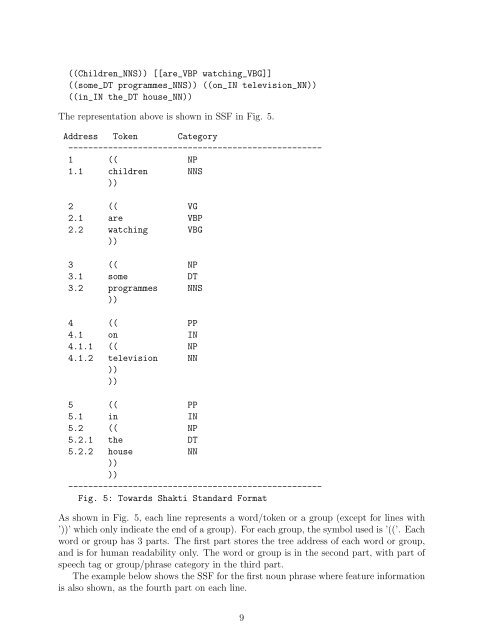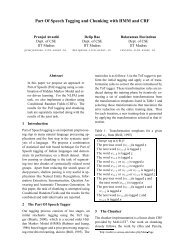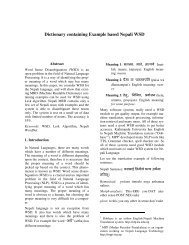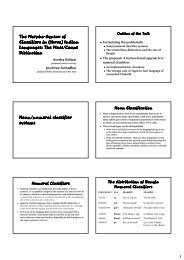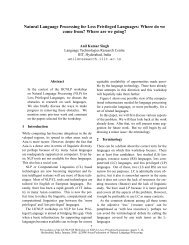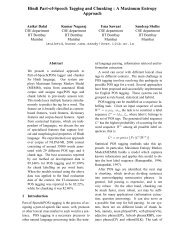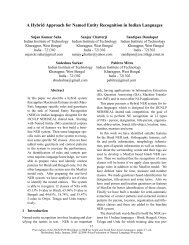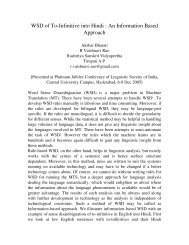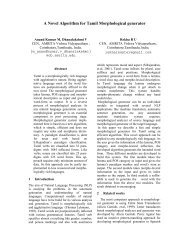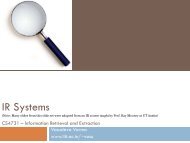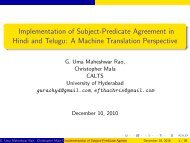SSF Format Doc - LTRC Home - IIIT Hyderabad
SSF Format Doc - LTRC Home - IIIT Hyderabad
SSF Format Doc - LTRC Home - IIIT Hyderabad
You also want an ePaper? Increase the reach of your titles
YUMPU automatically turns print PDFs into web optimized ePapers that Google loves.
((Children_NNS)) [[are_VBP watching_VBG]]<br />
((some_DT programmes_NNS)) ((on_IN television_NN))<br />
((in_IN the_DT house_NN))<br />
The representation above is shown in <strong>SSF</strong> in Fig. 5.<br />
Address Token Category<br />
---------------------------------------------------<br />
1 (( NP<br />
1.1 children NNS<br />
))<br />
2 (( VG<br />
2.1 are VBP<br />
2.2 watching VBG<br />
))<br />
3 (( NP<br />
3.1 some DT<br />
3.2 programmes NNS<br />
))<br />
4 (( PP<br />
4.1 on IN<br />
4.1.1 (( NP<br />
4.1.2 television NN<br />
))<br />
))<br />
5 (( PP<br />
5.1 in IN<br />
5.2 (( NP<br />
5.2.1 the DT<br />
5.2.2 house NN<br />
))<br />
))<br />
---------------------------------------------------<br />
Fig. 5: Towards Shakti Standard <strong>Format</strong><br />
As shown in Fig. 5, each line represents a word/token or a group (except for lines with<br />
’))’ which only indicate the end of a group). For each group, the symbol used is ’((’. Each<br />
word or group has 3 parts. The first part stores the tree address of each word or group,<br />
and is for human readability only. The word or group is in the second part, with part of<br />
speech tag or group/phrase category in the third part.<br />
The example below shows the <strong>SSF</strong> for the first noun phrase where feature information<br />
is also shown, as the fourth part on each line.<br />
9


